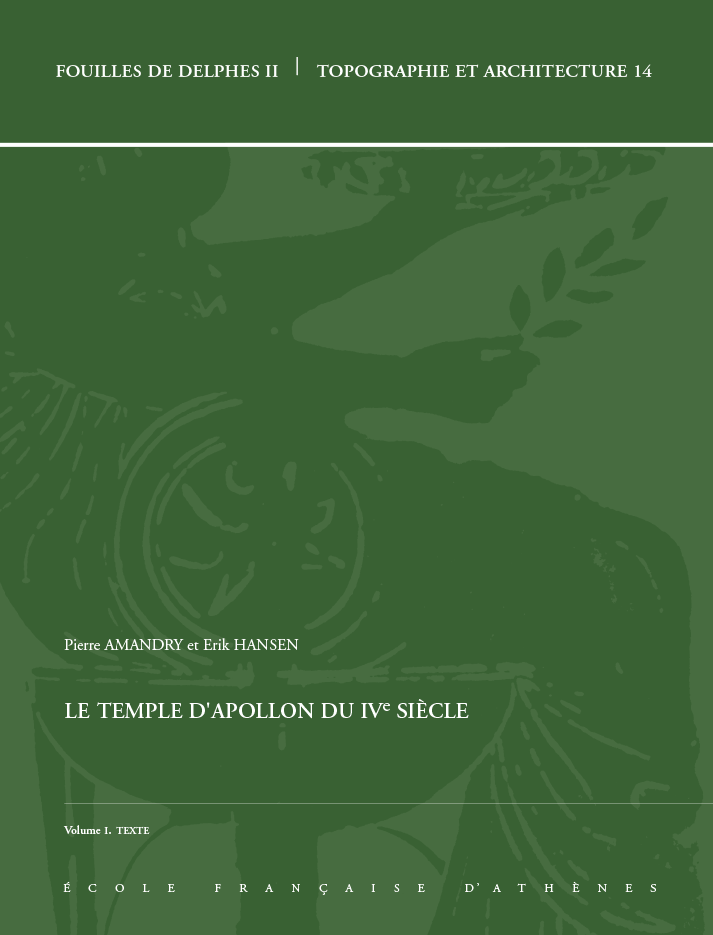L'étude du temple d'Apollon du IVe siècle à Delphes est le fruit d'une
collaboration entre l'archéologue Pierre Amandry et l'architecte Erik
Hansen. Les circonstances n'ont pas permis qu'elle aboutît à un texte
commun. Aussi a-t-on pris le parti de reproduire les articles que Pierre
Amandry a consacrés au monument et de les faire suivre de l'étude
architecturale de Erik Hansen. Le but principal de cette dernière est de
décrire la construction du temple pour ainsi dire pierre à pierre, en
suivant les procédés des artisans, et de donner l'image la plus fidèle
possible de l'affairement d'un chantier dans l'Antiquité. En
l'occurrence, on a la chance unique de disposer aussi bien de la ruine
du bâtiment que des fragments des comptes qui ont été dressés lors de sa
construction et qui donnent une idée de l'organisation du chantier, de
son évolution et de son coût. Les deux sources se complètent
mutuellement et permettent d'établir le calendrier d’une construction
qui s'est étalée sur trente-quatre années, de 367 à 333 av. J.-C., avec
une interruption de dix années due à la troisième «guerre sacrée», entre
356 et 346 av. J.-C. Un changement d’architecte en 340, Agathôn
succédant à Xénodoros, n'est apparemment pas sans rapport avec une
modification introduite dans le projet d'aménagement de l'intérieur du
temple, là même où siégeait le fameux oracle de Delphes.
The
study of the fourth century BC temple of Apollon at Delphi is the
outcome of a collaboration between the archaeologist Pierre Amandry and
the architect Erik Hansen. Circumstances did not permit the creation of
a common text. It has therefore been decided that the articles by Pierre
Amandry on the monument should be reprinted, followed by the
architectural study by Erik Hansen. The main goal of the latter is to
describe the temple stone by stone, by mapping the procedures of the
artisans, and to give the most faithful image possible of the activities
on a building site in Antiquity. As it happens, we are fortunate to
possess not only the ruins of the building itself, but also fragments of
the construction accounts drawn up during the work, which provide an
idea of the organisation of the building site, its evolution and the
costs involved. The two sources are complementary and permit
establishing the construction calendar which stretches over a period of
34 years, from 367 to 333 BC, with a ten-year interruption due to the
third 'sacred war' between 356 and 346 BC. A change of architect in 340,
Agathon succeeding Xenodoros, appears to be connected with a
reorganisation of the interior space in the area occupied by the famous
oracle of Delphi.

books & series
e-books
journals
eCSCO

 English
English
 add to cart
add to cart
